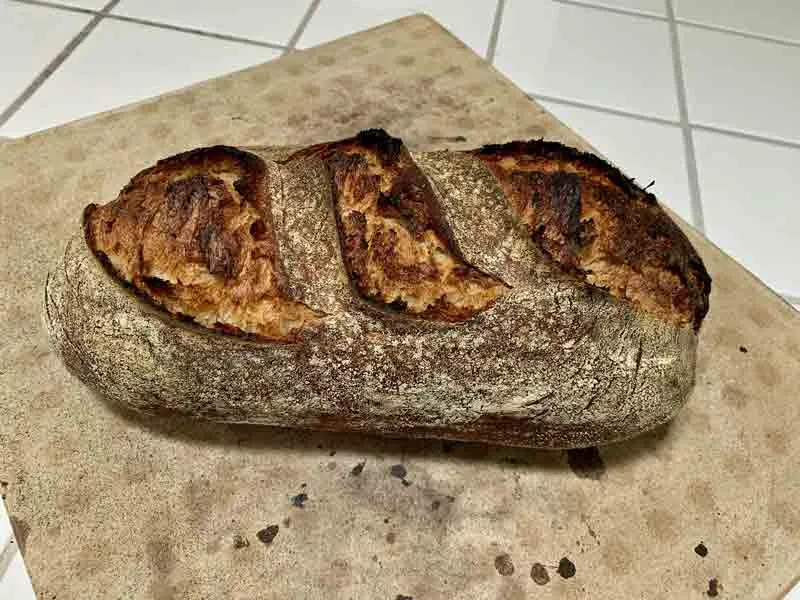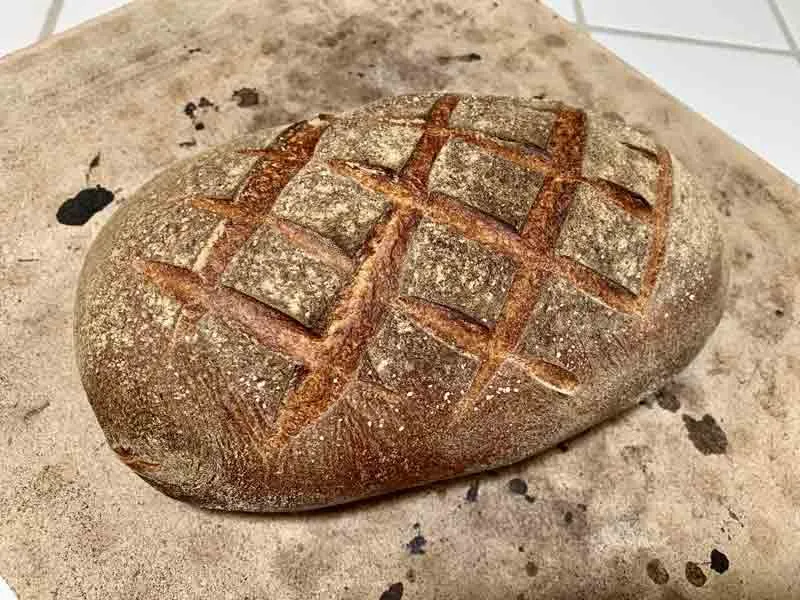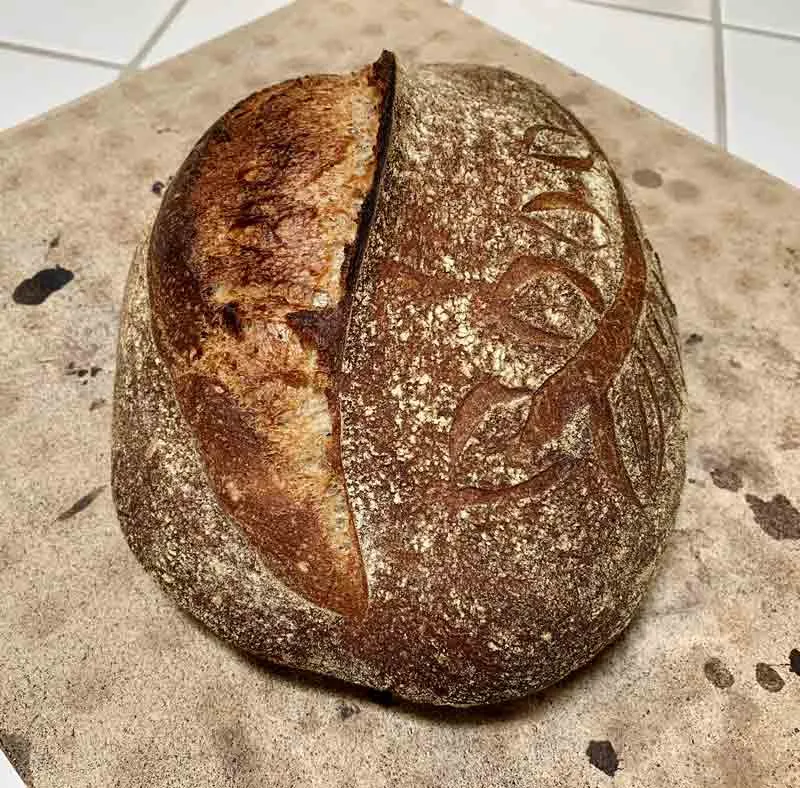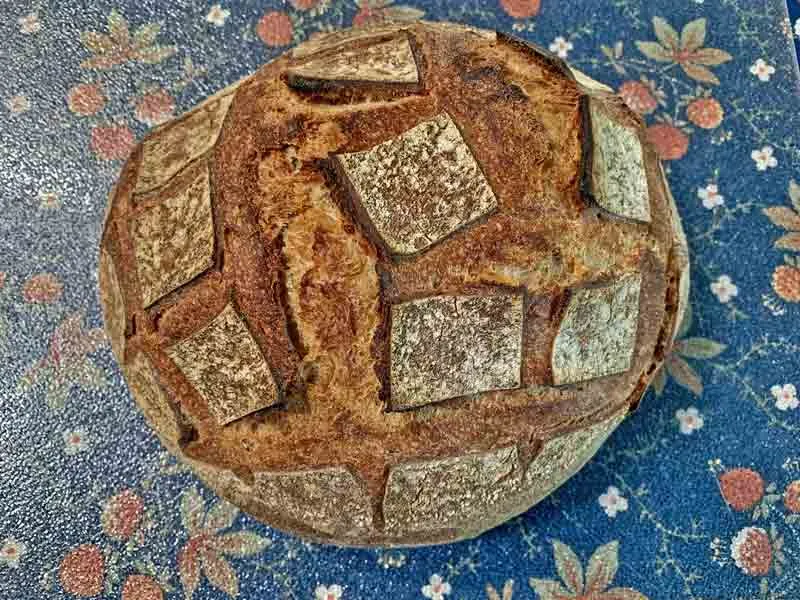dmsnyder's blog
Today's bake 4-8-2019: Another mixed grain Sourdough with a couple tweaks

Sourdough Bread: April 8, 2019
David Snyder
This is another hybrid bread. It differs from my last bake in the following ways:
I substituted a low-protein white whole wheat for the Turkey Red wheat used previously.
I decreased the total dough hydration to 72% because of the lower protein content of the flour mix. At the lower hydration level, the dough was still significantly slacker than the previous bake. It was also remarkably more extensible.
Today's bake 3-31-2019

Sourdough Bread: March 30, 2019
David Snyder
This is another hybrid bread. It differs from my last bake in the following ways:
I have increased the whole grain flour to a total of 30% of the total flour by adding 10% Kamut.
I have increased the final dough hydration to 75%.
Total Dough |
|
|
Ingredient | Wt (g) |
San Francisco-style Sourdough Bread 3-22-2019

Sourdough Bread: March 22, 2019
David Snyder
This bake is a kind of hybrid (high bread?). It utilizes elements of the formula and method shared by Mike Giraudo on Facebook, Peter Reinhart's James Beard Award-winning “San Francisco Sourdough,” as presented in his book, “Crust and Crumb” and various techniques I have adopted over the years, such as autolyse.
- Log in or register to post comments
- 16 comments
- View post
- dmsnyder's Blog
History of San Francisco Sourdough
Steve Giraudo, whose family owned the company that ultimately controlled Parisian, Colombo, Toscano and Boudin bakeries, sent me links to a couple youtube videos that document the history of those companies. Note that Larraburu was never part of this consortium. Given the recent interest in SF SD, I thought these would be of interest to many TFL folks.
Another Attempt to Produce a San Francisco-Style Sourdough Bread: Finally, success!

San Francisco Style Sourdough Bread
March, 2019
David Snyder
This recipe was kindly shared by Ann Rogers who got it from Mike Giraudo. Mike's recipe is his own adaptation of that of Ramon Padilla,who worked for 30 years as a baker for Parisian and Boudin bakeries in San Francisco.
These are the instructions she provided verbatim, followed by my adaptation, reformulated to make 1000g of dough.
------------------------------------------
Attempt to replicate Larraburu Bros. San Francisco Sourdough

San Francisco Sourdough from Larraburu Brothers
as described in
https://www.aaccnet.org/publications/cc/backissues/1978/Documents/chem55_461.pdf
as interpreted by
David Snyder
February, 2019



